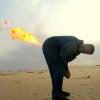I'll try to help out:
1. Usually the GWR probe diameter is specified by the vendor.
2. Total level and calibration range should be set by the process engineer who knows the range of liquid levels he wants to see (he is the one who should be specifying levels on the vessel drawing). For a single point level I usually use a minimum of 14" jig set on the transmitter. Once you start adding in hi, hi-hi, lo, and lo-lo levels it is a simple matter of making sure you have enough range to cover them. Eg:
HHLL : 48"
HLL: 42"
NLL: 30"
LLL: 16"
LLLL: 10"
Difference between HHLL and LLLL = 48-10 = 38". Now you add 4-6" to either end of this to make sure you are not right at the end of the sensing limit, viola! 50" is your measuring range, and can also be the jig set (Center to Center dimension for level bridle nozzles)
3. Much the same here, but for a dP type transmitter you also need the liquid density/S.G. so the liquid head can be converted into height. Make sure that the liquid density is relatively constant for this application or you can get siginificant level errors as the liquid density changes from what the transmitter was calibrated to!
Hope that helps.
Cheers

 FB
FB









